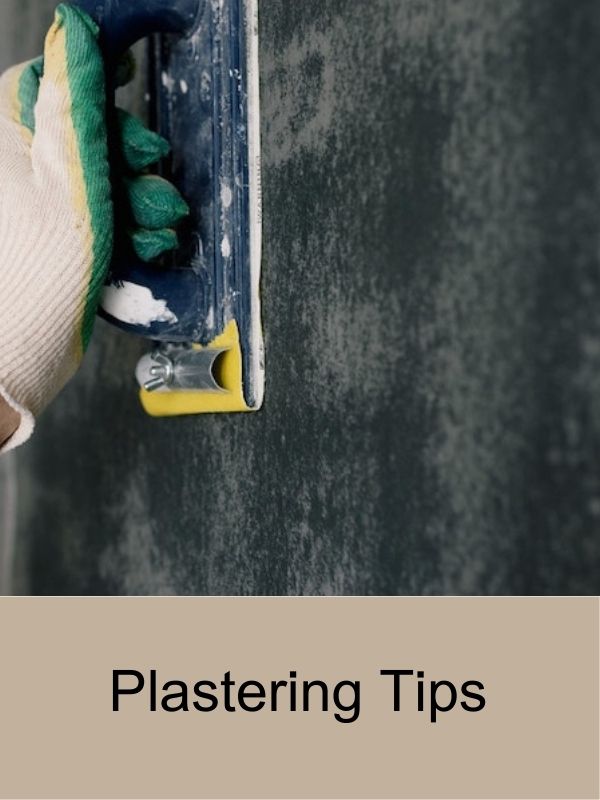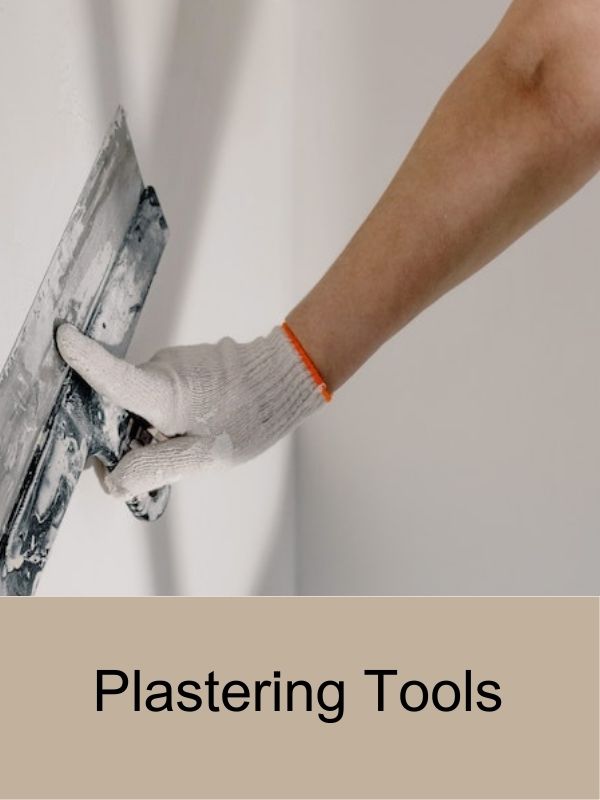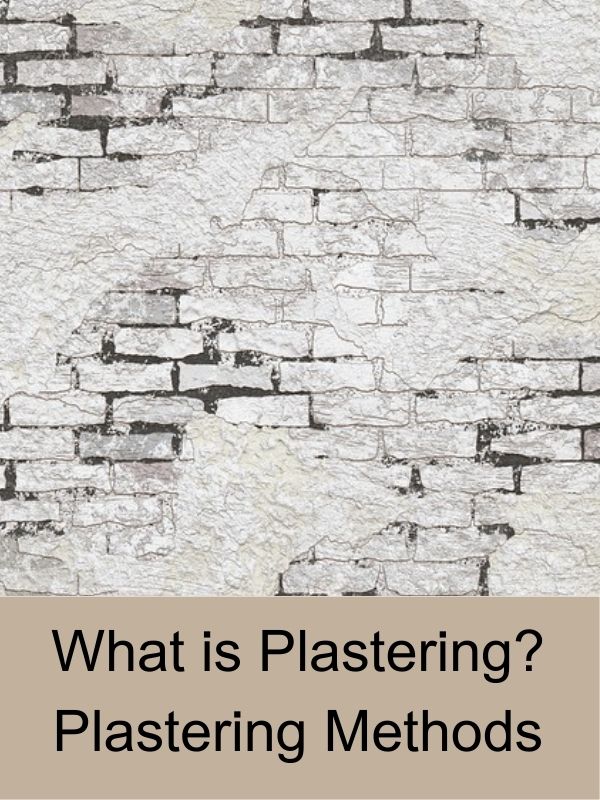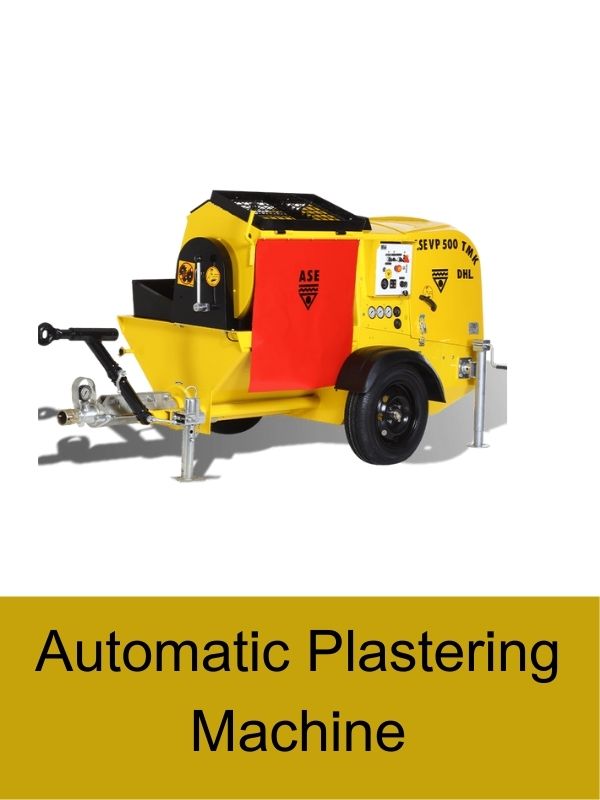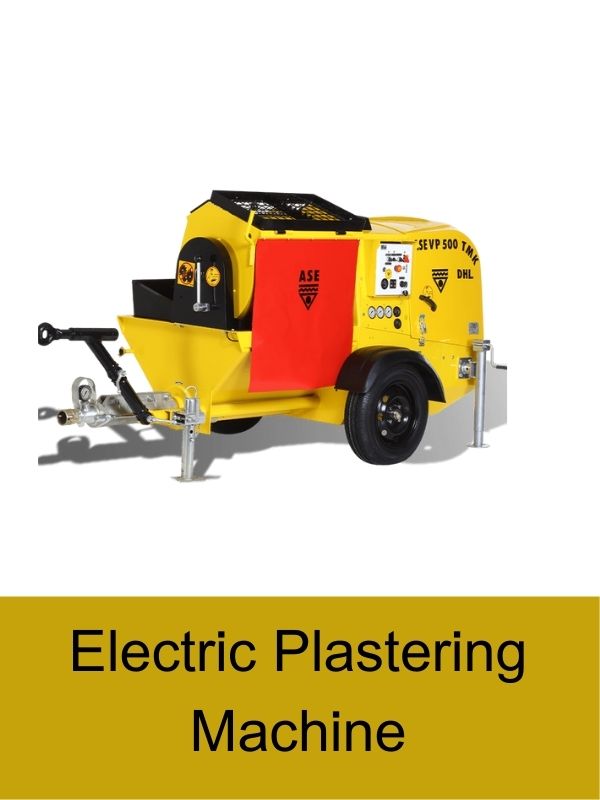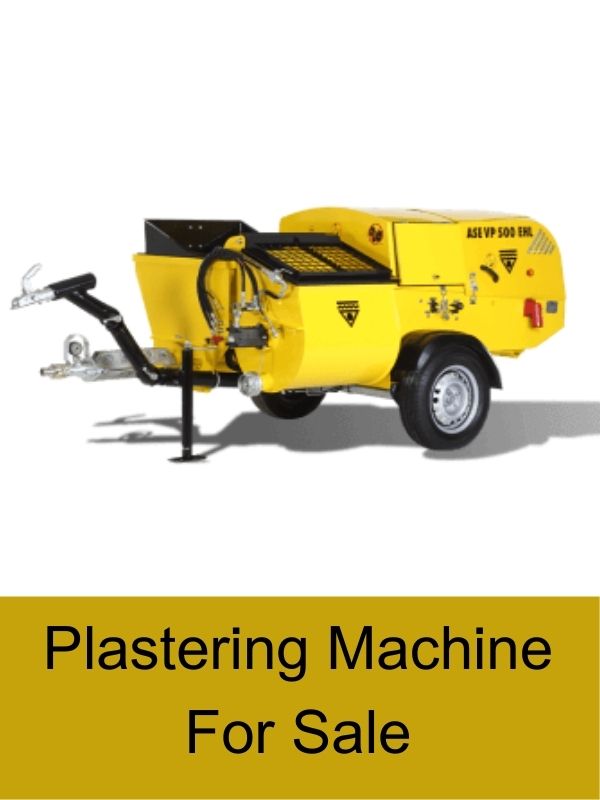Plastering pumps, also known as plaster pumps or rendering pumps, are specialized machines used in the construction industry for the efficient application of plaster, mortar, or other similar materials onto surfaces. These pumps utilize mechanical and hydraulic systems to transport and spray the plastering material, offering numerous advantages over traditional manual plastering methods. In this article, we will explore the working mechanism of plastering pumps, their advantages and disadvantages, their applications, and provide information on prices and availability. So, let’s dive into the world of plastering pumps!
How do Plastering Pumps Work?
Plastering pumps work by utilizing a combination of mechanical and hydraulic systems to transport and spray plaster or mortar onto surfaces. The process can be broken down into several key steps:
- Material Loading: The plastering pump is equipped with a hopper or a container where the plaster or mortar mixture is loaded. The hopper can hold a significant amount of material, allowing for continuous operation without frequent refills.
- Mixing: Once the plaster or mortar mixture is loaded into the hopper, it is usually mixed within the pump itself. Some plastering pumps have an integrated mixing system that ensures the consistency and uniformity of the material, while others require pre-mixed material to be loaded into the hopper.
- Transportation: Plastering pumps are designed to transport the plaster or mortar mixture from the hopper to the application site. This is achieved through the use of powerful hydraulic systems that propel the material forward.
- Spraying: The plastering pump is equipped with a spraying nozzle or gun, which is responsible for ejecting the plaster or mortar mixture onto the desired surface. The nozzle can be adjusted to control the spray pattern, allowing for precise application.
- Control Panel: Plastering pumps typically have a control panel that allows the operator to adjust various settings, such as material flow rate, spraying pressure, and nozzle configuration. This enables the operator to fine-tune the machine’s performance to suit different plastering requirements.
Advantages of Plastering Pumps
Plastering pumps offer several advantages over traditional manual plastering methods, making them a popular choice in the construction industry. Here are some key advantages:
- Time and Labor Savings: Plastering pumps significantly reduce the time and effort required for plastering projects. The automated operation and continuous material flow allow for faster completion of tasks, increasing overall productivity.
- Consistent Quality: Plastering pumps ensure a consistent and uniform application of plaster or mortar. The controlled spraying mechanism and adjustable nozzle allow for precise coverage and even distribution, resulting in a high-quality finish.
- Efficiency and Productivity: With plastering pumps, larger areas can be covered in less time compared to manual methods. This increased efficiency leads to higher productivity and the ability to take on more projects.
- Versatility: Plastering pumps are versatile machines that can handle various plaster and mortar mixtures, adapting to different surface conditions and textures. This versatility makes them suitable for a wide range of applications.

Disadvantages of Plastering Pumps
While plastering pumps offer numerous advantages, it’s essential to consider some potential disadvantages as well:
- Initial Investment: Plastering pumps can be a significant investment for contractors or construction companies. The cost of purchasing or renting the machine, along with maintenance and repairs, should be taken into account.
- Operator Skill Requirement: Operating a plastering pump requires some level of training and skill. Proper knowledge of machine operation, maintenance, and safety precautions is necessary to ensure optimal performance and prevent accidents.
- Limited Application Scope: Plastering pumps are primarily designed for large-scale projects and may not be suitable for small or intricate areas. Manual methods may still be preferable in certain situations where accessibility is limited.
Applications of Plastering Pumps
Plastering pumps find applications in various construction and renovation projects, including:
- Residential Construction: Plastering pumps are commonly used in the construction of houses, apartments, and other residential buildings, allowing for efficient plaster application on walls and ceilings.
- Commercial Construction: Plastering pumps are widely employed in commercial construction projects, such as office buildings, hotels, and shopping centers, where large surface areas require plastering.
- Renovation and Restoration: Plastering pumps are valuable tools for renovation and restoration projects, enabling the application of fresh plaster or mortar to repair and revitalize existing surfaces.
Plastering Pumps Prices and Availability
The price of plastering pumps can vary depending on factors such as brand, model, features, and the country of purchase. It is recommended to contact local suppliers or search online platforms that specialize in construction machinery to obtain accurate and up-to-date pricing information. Rental options are also available, offering flexibility for shorter-term projects.
To find plastering pumps for sale, you can explore reputable construction equipment suppliers, machinery dealers, or online marketplaces dedicated to the sale of construction equipment. These platforms often provide detailed product descriptions, specifications, and pricing information, enabling you to make informed purchasing decisions.
Introduction to Different Types of Plaster Pumps
Plaster pumps are essential tools used in construction and remodeling projects to efficiently apply plaster, stucco, or other similar materials to surfaces. They offer significant advantages over manual application, such as increased speed, improved consistency, and reduced labor costs. There are several types of plaster pumps available, each with its own unique features and benefits. In this article, we will explore three common types of plaster pumps: peristaltic pumps, piston pumps, and rotor stator pumps.
Peristaltic Pumps
Peristaltic pumps, also known as squeeze pumps, operate by squeezing a flexible tube to propel the material forward. These pumps are suitable for handling a wide range of materials, including cementitious mixes, lime-based plasters, and even materials with fibers or aggregates. One of the key advantages of peristaltic pumps is that they can pump materials with high viscosity without clogging. They also offer precise control over the flow rate and are relatively easy to clean. However, peristaltic pumps may have limitations in terms of output capacity and pressure capabilities compared to other types.
Piston Pumps
Piston pumps, also referred to as reciprocating pumps, use a piston or plunger to displace the material. They are commonly used for high-pressure applications, such as spraying plaster onto walls or ceilings. Piston pumps are known for their robust construction and ability to handle heavy-duty materials. They can generate high pressures, allowing for efficient spraying and uniform application of plaster. However, piston pumps may require more maintenance and can be more challenging to clean due to their intricate design.
Rotor Stator Pumps
Rotor stator pumps, also called progressive cavity pumps, consist of a rotating rotor inside a stationary stator. As the rotor turns, cavities are formed, which draw in and transport the material. These pumps are well-suited for handling thick and viscous materials, making them ideal for plastering applications. Rotor stator pumps offer a steady and continuous flow of material, ensuring consistent application. They can handle a wide range of plaster mixtures, including those with additives or aggregates. However, rotor stator pumps may require regular maintenance and replacement of wear parts.
Choosing the Right Plaster Pump for Your Project
When selecting a plaster pump for your project, several factors should be taken into consideration:
- Project Size and Scope: Determine the scale of your project, including the surface area to be covered and the required thickness of the plaster. Smaller projects may benefit from more compact pumps, while larger projects may require pumps with higher output capacities.
- Material Compatibility: Consider the specific plaster or stucco mixtures you will be using. Ensure that the pump you choose can handle the viscosity, aggregate size, and any other unique characteristics of the material.
- Output Capacity and Pressure Requirements: Evaluate the desired flow rate and pressure needed for your application. Different plaster pumps have varying capacities and pressure capabilities, so choose one that matches your project requirements.
Comparing Different Plaster Pump Models and Features

To compare different plaster pump models, consider the following features:
- Pumping Capacity: Look for pumps with a suitable output capacity to match your project’s needs. This will ensure efficient and timely completion of your plastering tasks.
- Pressure Range: Consider the required pressure range for your application. Some pumps offer adjustable pressure settings, allowing flexibility in different situations.
- Mobility and Portability: If you anticipate moving the pump frequently or working in tight spaces, a compact and lightweight pump may be more practical.
- Ease of Maintenance: Evaluate the ease of cleaning, replacing parts, and general maintenance requirements of each pump model.
- Cost: Consider the initial purchase price, operating costs, and long-term durability to determine the overall value for your project.
Plaster Pump Techniques and Best Practices
Once you have selected the appropriate plaster pump, it is essential to follow best practices for successful plaster application. Consider the following techniques:
A. Proper Plaster Mix Consistency and Viscosity:
Achieving the correct mix consistency is crucial for optimal pump performance. Follow the manufacturer’s guidelines for water-to-plaster ratio to ensure a smooth and workable mixture.
B.Tips for Even and Smooth Plaster Application:
- Start with a consistent spraying pattern, moving the pump in a controlled and overlapping manner to avoid uneven coverage.
- Maintain a consistent distance from the surface being plastered to ensure a uniform thickness.
- Regularly check the nozzle for clogging or wear and replace as needed to maintain an even spray pattern.
C. Techniques for Plastering Walls, Ceilings, and Other Surfaces:
- Divide larger surfaces into manageable sections to ensure thorough coverage.
- Use trowels or floats to achieve a smooth finish after the plaster has been sprayed.
D. Dealing with Common Challenges and Troubleshooting:
- Monitor the material flow and adjust the pump settings as needed to avoid blockages or uneven application.
- Address any pump malfunctions promptly to minimize downtime and maintain productivity.
Frequently Asked Questions
Can plastering pumps be used for exterior plastering?
Yes, plastering pumps are suitable for both interior and exterior plastering applications. Their versatility allows for efficient plaster application on a variety of surfaces.
What maintenance is required for plastering pumps?
What maintenance is required for plastering pumps?
Regular maintenance of plastering pumps is essential to ensure their optimal performance and longevity. This includes cleaning the machine after use, inspecting and replacing worn-out parts, and lubricating moving components as per the manufacturer’s guidelines.
What safety precautions should be taken when using plastering pumps
While operating a plastering pump requires some training and skill, modern machines are designed to be user-friendly. With proper instruction and practice, operators can quickly become proficient in operating plastering pumps.
What safety precautions should be taken when using plastering pumps?
When using plastering pumps, operators should follow safety guidelines provided by the manufacturer. This includes wearing appropriate personal protective equipment (PPE), ensuring a well-ventilated workspace, and adhering to safe operating procedures to prevent accidents.
Can plastering pumps handle different types of plaster or mortar mixtures?
Yes, plastering pumps are designed to handle a wide range of plaster or mortar mixtures. However, it’s important to consult the machine’s specifications and the manufacturer’s guidelines to ensure compatibility with specific materials.
Plaster pumps for sale
Ase Machinery is a prominent manufacturer and supplier of plaster pumps in Turkey. With their expertise and commitment to delivering high-quality equipment, Ase Machinery has established a strong presence in the Turkish market. Their plaster pumps are known for their reliability, efficiency, and durability, making them a preferred choice among contractors and construction professionals in Turkey.
Ase Machinery’s plaster pumps are designed to streamline the plastering process, offering precise and consistent application of coating materials such as plaster, stucco, and mortar. These pumps are equipped with powerful pumping systems that ensure optimal flow rates and pressure, resulting in uniform coverage and a smooth finish. The company’s dedication to technological innovation and customer satisfaction has made Ase Machinery a trusted brand in the field of plaster pumps in Turkey, providing contractors with reliable and efficient equipment to enhance their productivity and project outcomes.
Conclusion
Plastering pumps have become invaluable tools in the construction industry, offering efficient and high-quality plaster application. With their automated operation, consistent results, and time-saving capabilities, they have revolutionized the plastering process. Understanding how plastering pumps work, their advantages, disadvantages, and applications can help construction professionals make informed decisions about incorporating them into their projects. So, consider the benefits and explore the options of plastering pumps for smoother, faster, and more productive plastering endeavors.




